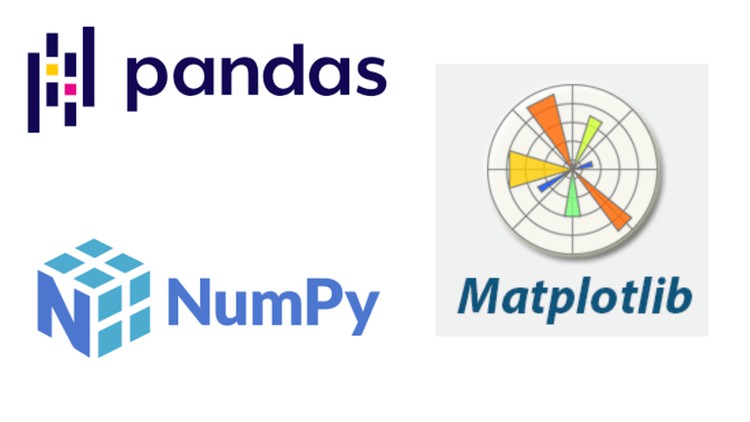
Learn python basic to advance quickly
What you will learn
Go deeper to understand complex topics in python numpy, pandas and data visualisation
become expert in pandas,numpy and matplotlib
learn to analyse data in depth using pandas
Go from absolute beginner to become a confident python numpy, pandas and matplotlib user
Acquire the required python numpy, pandas and matplotlib knowledge you need to excel in data Science, machine Learning, ai and deep learning
learn to visualise data like pro in matplotlib and pandas
Description
Nearly every scientist working in Python draws on the power of NumPy.
NumPy brings the computational power of languages like C and Fortran to Python, a language much easier to learn and use. With this power comes simplicity: a solution in NumPy is often clear and elegant.
Pandas is an open-source library that is made mainly for working with relational or labeled data both easily and intuitively. It provides various data structures and operations for manipulating numerical data and time series. This library is built on top of the NumPy library. Pandas is fast and it has high performance & productivity for users.
Advantages
- Fast and efficient for manipulating and analyzing data.
- Data from different file objects can be loaded.
- Easy handling of missing data (represented as NaN) in floating point as well as non-floating point data
- Size mutability: columns can be inserted and deleted from DataFrame and higher dimensional objects
- Data set merging and joining.
- Flexible reshaping and pivoting of data sets
- Provides time-series functionality.
- Powerful group by functionality for performing split-apply-combine operations on data sets.
Matplotlib is easy to use and an amazing visualizing library in Python. It is built on NumPy arrays and designed to work with the broader SciPy stack and consists of several plots like line, bar, scatter, histogram, etc.
Content